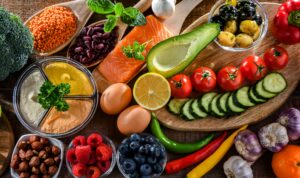Nutrition’s Role in Wound Healing

Let’s talk about nutrition’s role in wound healing. Nutrition plays a pivotal role in supplying the building blocks for tissue repair and immune function. For instance, poor intake can delay recovery and raise infection risks in patients with chronic wounds. As nurses, your guidance on dietary strategies can boost outcomes significantly. This guide explores key nutrients and practical meal plans. In addition, it offers tips to integrate nutrition into wound care plans. Use these insights in your practice for the best patient outcomes.
Why Nutrition Matters in Wound Healing
Wound healing demands extra energy and nutrients. The process involves inflammation, proliferation, and remodeling stages. During inflammation, the body fights infection. Proliferation builds new tissue. Remodeling strengthens it. However, malnutrition impairs these phases. For example, low protein slows collagen formation. Dehydration affects cell migration. Furthermore, comorbidities like diabetes worsen nutrient needs. Thus, we must assess intake early. Screen for deficiencies via lab tests or diet histories. Consequently, targeted nutrition accelerates recovery and cuts complications.
Key Nutrients for Optimal Wound Repair
Certain nutrients stand out for their healing benefits. Focus on these to guide patient recommendations. Always consider individual needs, allergies, and restrictions.
Protein: The Building Block of Tissue
Protein provides amino acids for collagen and new cells. Aim for 1.2-2.0 grams per kg body weight daily in wounded patients. Sources include lean meats, eggs, dairy, beans, and nuts. However, vegans can use quinoa or lentils. Deficiency leads to weak scars. Therefore, supplement if intake falls short.
Vitamin C: Collagen Synthesis Booster
Vitamin C aids collagen production and antioxidant defense. Recommend 500-1000 mg daily for healing. Citrus fruits, bell peppers, and broccoli offer rich sources. Additionally, it enhances iron absorption for better oxygen delivery. But, smokers need more due to oxidative stress. So, you should monitor levels in at-risk groups.
Vitamin A: Immune and Epithelial Support
Vitamin A supports immune function and skin regeneration. Target 700-900 mcg daily from carrots, sweet potatoes, and spinach. It fights infection and promotes epithelial growth. Yet, excess can be toxic. Therefore, balance through diet over supplements.
Zinc: Cell Division and Immunity
Zinc drives cell proliferation and protein synthesis. Suggest 15-30 mg daily via oysters, beef, seeds, or fortified cereals. Deficiency delays healing, especially in diabetics. Furthermore, it has anti-inflammatory effects. Use short-term supplements if labs show low levels.
Other Essential Nutrients
Iron prevents anemia and aids oxygen transport; include spinach or red meat. Omega-3 fatty acids from fish reduce inflammation. Hydration maintains moist environments; aim for 8-10 glasses daily. Additionally, calories matter—boost intake by 250-500 for healing demands.
Assessing Nutritional Status in Patients
Start with a thorough evaluation. Use tools like the Mini Nutritional Assessment. Weigh patients regularly and check albumin levels. Ask about appetite, chewing issues, or gastrointestinal problems. Furthermore, involve dietitians for complex cases. Document findings in care plans. Early detection prevents healing setbacks.
Practical Meal Plans for Wound Healing
Tailor meals to be nutrient-dense and appealing. Here’s a sample daily plan for a 2000-calorie diet. Adjust for preferences or restrictions.
Breakfast Ideas
Opt for protein-packed starts. For example, Greek yogurt with berries and almonds provides vitamin C and zinc. Alternatively, eggs and smoked salmon with a side of fresh berries. There are many great options but the key is to highlight protein.
Lunch Options
Focus on balanced plates. Grilled chicken salad with spinach, tomatoes, and olive oil dressing delivers protein, vitamin A, and healthy fats. Vegetarian? Try lentil soup with carrots.
Dinner Suggestions
Emphasize variety. Baked salmon with sweet potatoes and broccoli supplies omega-3s, vitamin A, and C. Or choose turkey stir-fry with bell peppers for lean protein and antioxidants.
Snacks and Supplements
Add nutrient boosts between meals. Cottage cheese and organic berries offer protein and vitamin C. If needed, you can recommend multivitamins or protein powders. However, it’s always best to prioritize real food.
Patient Education and Monitoring
Educate patients on nutrition’s impact. Use simple handouts with food lists and recipes. Teach portion control and label reading. Involve families for meal prep support. Monitor progress via wound measurements and weight checks. Adjust plans as healing advances. Thus, empowered patients results in better adherence and compliance.
Challenges and Solutions in Nutritional Care
Barriers like poor appetite or dysphagia can hinder intake. Address with small, frequent meals or liquid supplements. For cultural preferences, adapt plans accordingly. If a patient has swallowing issues, collaborate with speech therapists. You can overcome cost concerns with affordable options like eggs or canned fish. Proactive solutions ensure nutritional success.
Conclusion: Integrating Nutrition into Wound Care
By emphasizing key nutrients and meal plans, we can transform wound healing trajectories. Stay vigilant in assessments and education. Consequently, you’ll deliver comprehensive care that supports recovery and well-being.
Ready to take your wound care expertise to the next level? Enroll in our upcoming Wound Care Certification Course (WCC Prep) at AppleTree CEU—designed for nurses like you to master advanced techniques and earn your certification. Available now! Enroll Here
